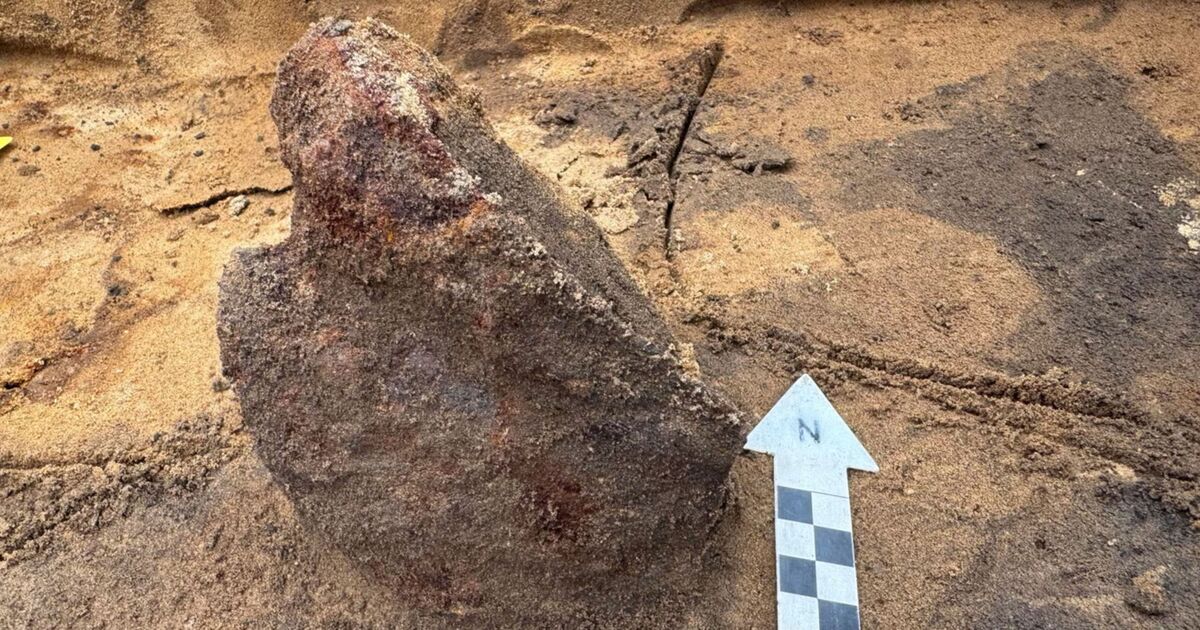An “exceptionally rare” Roman-era helmet was found in Denmark, along with a significant hoard of weapons.
They were found strategically placed within the postholes of two ancient houses at Losning Sondermark.
When researchers from the Cultural Museum in Vejle, Denmark, first found two iron plates, each the size of a human palm, they were not sure what its purpose was historically.
However, upon further inspection using X-ray imaging, they learned that beneath the layers of rust, they were actually parts of a Roman helmet, the first of its kind discovered in Denmark.
Roman helmets are considered exceptionally rare in Scandinavia, prior discoveries were limited to Southern Sweden.
Researchers have identified the metal plants to be the cheek and neck guards of a Roman helmet dating back to the 4th century.
The discovery also comprised approximately 100 artefacts, including spearheads, swords, lances, chainmail, and helmet fragments.
The chainmail is also exceptional, as it represents the first instance of such armour being associated with a settlement rather than a burial context in the region.
Among the findings are fragments of two distinctive bronze neck rings, which researchers believe were personal adornments of a chieftain.
The complexity and quality of the military equipment suggest ownership by the highest warrior elite of the ancient society.
Notably, there are differences between the two sets of weapon deposits found in the two houses.
One appears to have been buried during the demolition of the house, while the other was interred during its construction.
Researchers said: “This indicates that they are not remnants of a weapons workshop, military barracks, or similar contexts.”
“Ongoing excavation work and subsequent analysis of the materials will hopefully reveal whether the equipment belonged to local warriors or if it represents spoils of war from a defeated enemy.”












